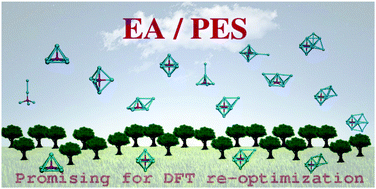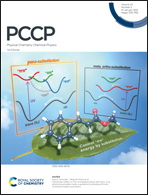Modeling microsolvation clusters with electronic-structure calculations guided by analytical potentials and predictive machine learning techniques†
Abstract
We propose a new methodology to study, at the density functional theory (DFT) level, the clusters resulting from the microsolvation of alkali-metal ions with rare-gas atoms. The workflow begins with a global optimization search to generate a pool of low-energy minimum structures for different cluster sizes. This is achieved by employing an analytical potential energy surface (PES) and an evolutionary algorithm (EA). The next main stage of the methodology is devoted to establish an adequate DFT approach to treat the microsolvation system, through a systematic benchmark study involving several combinations of functionals and basis sets, in order to characterize the global minimum structures of the smaller clusters. In the next stage, we apply machine learning (ML) classification algorithms to predict how the low-energy minima of the analytical PES map to the DFT ones. An early and accurate detection of likely DFT local minima is extremely important to guide the choice of the most promising low-energy minima of large clusters to be re-optimized at the DFT level of theory. In this work, the methodology was applied to the Li+Krn (n = 2–14 and 16) microsolvation clusters for which the most competitive DFT approach was found to be the B3LYP-D3/aug-pcseg-1. Additionally, the ML classifier was able to accurately predict most of the solutions to be re-optimized at the DFT level of theory, thereby greatly enhancing the efficiency of the process and allowing its applicability to larger clusters.

- This article is part of the themed collection: Emerging AI Approaches in Physical Chemistry


 Please wait while we load your content...
Please wait while we load your content...